|
|
A Walk Along Dublin's River Liffey
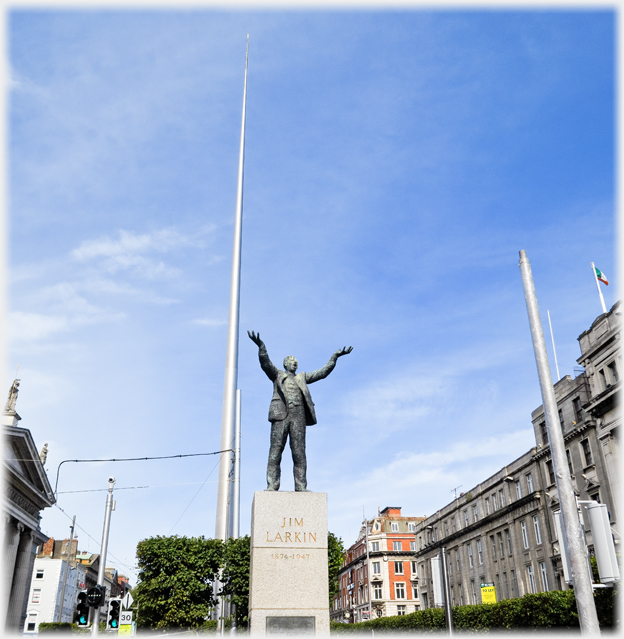 Jim Larkin and 'The Spire' on O'Connell Street
[The Spire was completed in 2003 and is 120 metres high, Jim Larkin (1876-1947) brought trade unionism and nationalism to many workers in Ireland, to the left is the Post Office.]
This page has pictures taken between the two main Dublin stations (Connolly and Heuston) which are a couple of miles apart; between them flows the
River Liffey,
Jim Larkin and 'The Spire' on O'Connell Street
[The Spire was completed in 2003 and is 120 metres high, Jim Larkin (1876-1947) brought trade unionism and nationalism to many workers in Ireland, to the left is the Post Office.]
This page has pictures taken between the two main Dublin stations (Connolly and Heuston) which are a couple of miles apart; between them flows the
River Liffey,
 the banks of which offer a pleasant walk. There is a new tram system providing passengers with a smooth ride between stations, but the allure of the walk,
if the weather and time permit, easily wins out and allows the visitor to see many of the city's 'visitor attractions' which lie near the 'Quays' of the Liffey. Although these photographs were taken on the walk, they are not in that order, for one thing is as near certain as anything in Ireland:
history starts with the 'Post Office'...
the banks of which offer a pleasant walk. There is a new tram system providing passengers with a smooth ride between stations, but the allure of the walk,
if the weather and time permit, easily wins out and allows the visitor to see many of the city's 'visitor attractions' which lie near the 'Quays' of the Liffey. Although these photographs were taken on the walk, they are not in that order, for one thing is as near certain as anything in Ireland:
history starts with the 'Post Office'...

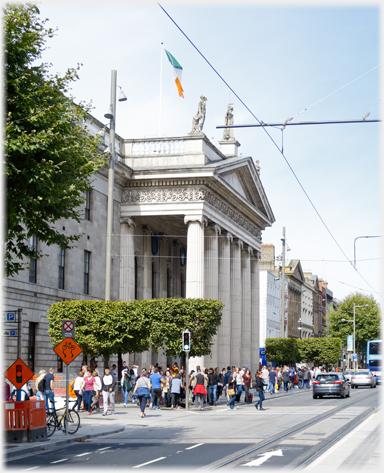 ...and this is its facade, where the tricolour was raised on 24th April 1916 - Easter Monday - setting Ireland on the way to freedom from British occupation
...and this is its facade, where the tricolour was raised on 24th April 1916 - Easter Monday - setting Ireland on the way to freedom from British occupation
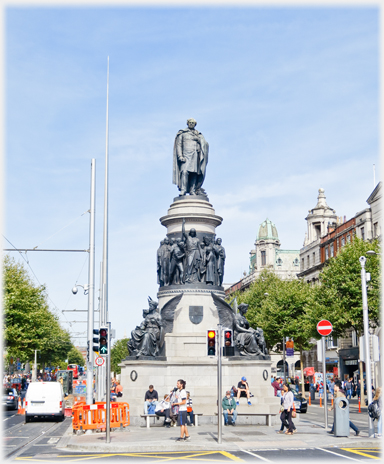 A little nearer the river is the monument to Daniel O'Connell, often seen as the father of Irish independence, which was unveiled in 1882, the street was renamed after him in 1924
A little nearer the river is the monument to Daniel O'Connell, often seen as the father of Irish independence, which was unveiled in 1882, the street was renamed after him in 1924
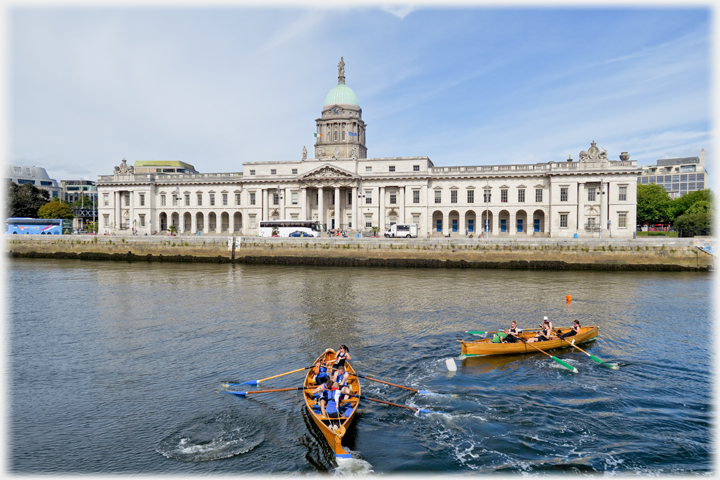 The Custom House was completed in 1791. Now refurbished and
open to the public
The Custom House was completed in 1791. Now refurbished and
open to the public

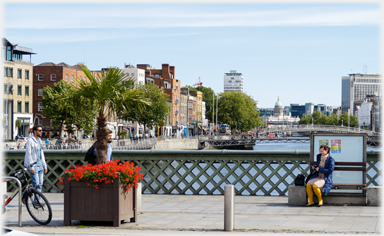 The view on the Grattan Bridge (looking downstream) which was built in 1873. It was named after the late 18th Century Irish parliamentarian who had sought continued independence for the Irish legislature. And in the next picture is the view...
The view on the Grattan Bridge (looking downstream) which was built in 1873. It was named after the late 18th Century Irish parliamentarian who had sought continued independence for the Irish legislature. And in the next picture is the view...
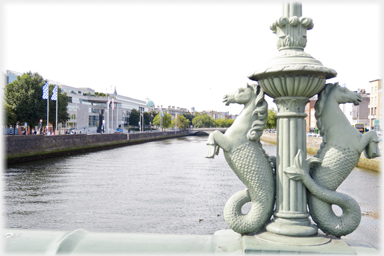 ...upstream from the Grattan Bridge, with its seahorse lamp posts, towards the City Council offices. The walk along the Liffey in central Dublin is a walk punctuated by the
river's bridges - each with its story
...upstream from the Grattan Bridge, with its seahorse lamp posts, towards the City Council offices. The walk along the Liffey in central Dublin is a walk punctuated by the
river's bridges - each with its story

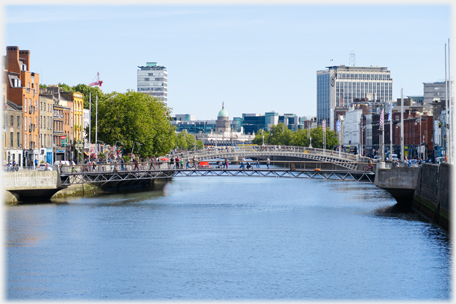 The Millenium and Ha'penny bridges from Grattan Bridge
The Millenium and Ha'penny bridges from Grattan Bridge
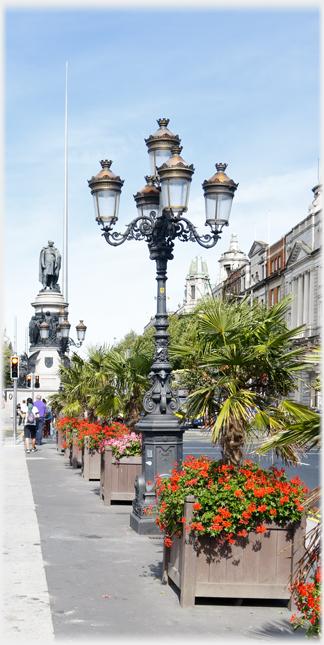 A lamp post on O'Connell Street, 'The Spire' is in the background
A lamp post on O'Connell Street, 'The Spire' is in the background
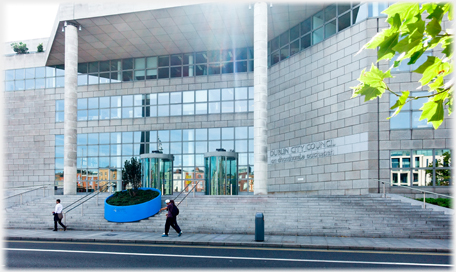 The banks of the Liffey do have new buildings such as the City Council offices
The banks of the Liffey do have new buildings such as the City Council offices
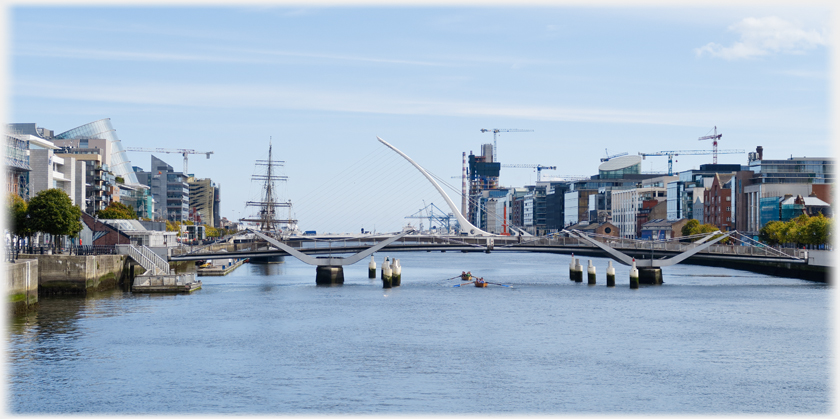 Looking downstream from the Talbot Memorial Bridge are: first the low supports of the Sean O'Casey Bridge, then rising behind it the white arm of the Samuel Becket Bridge, and beyond on the left the Dublin Convention Centre, beside which is a moored tall ship
Looking downstream from the Talbot Memorial Bridge are: first the low supports of the Sean O'Casey Bridge, then rising behind it the white arm of the Samuel Becket Bridge, and beyond on the left the Dublin Convention Centre, beside which is a moored tall ship
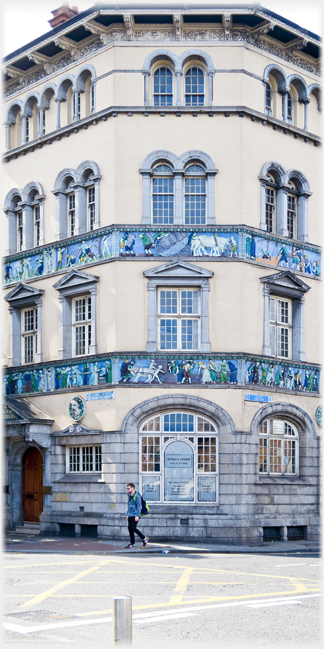 The Sunlight building of 1902 on Essex Quay with its
terracotta tile friezes
The Sunlight building of 1902 on Essex Quay with its
terracotta tile friezes

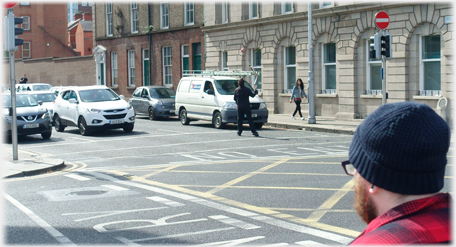
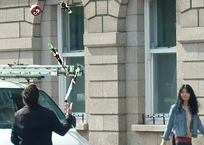 The cars are halted by the lights, and a juggler moves out in front of them, hopefully you can see his three clubs and a ball in the air in the enlarged image on the left
The cars are halted by the lights, and a juggler moves out in front of them, hopefully you can see his three clubs and a ball in the air in the enlarged image on the left
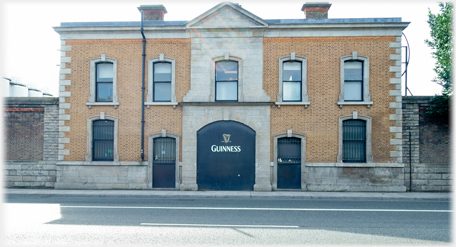 The Gate Lodge
The Gate Lodge
 that fronts the home of 'Liffey Water' near Heuston Station
that fronts the home of 'Liffey Water' near Heuston Station
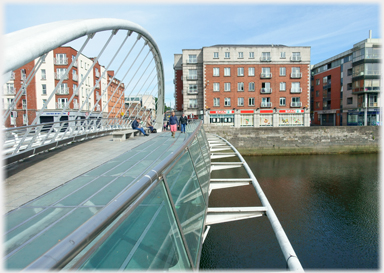 The Spanish designed James Joyce Bridge was opened in 2003 and hangs in very modern form on two steel arches, it sits next to...
The Spanish designed James Joyce Bridge was opened in 2003 and hangs in very modern form on two steel arches, it sits next to...
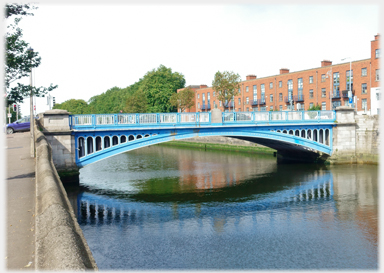 ...the Rory O'More Bridge which was named after a key figure in the Irish rebellion of 1641, the present cast iron structure dates from 1861
...the Rory O'More Bridge which was named after a key figure in the Irish rebellion of 1641, the present cast iron structure dates from 1861
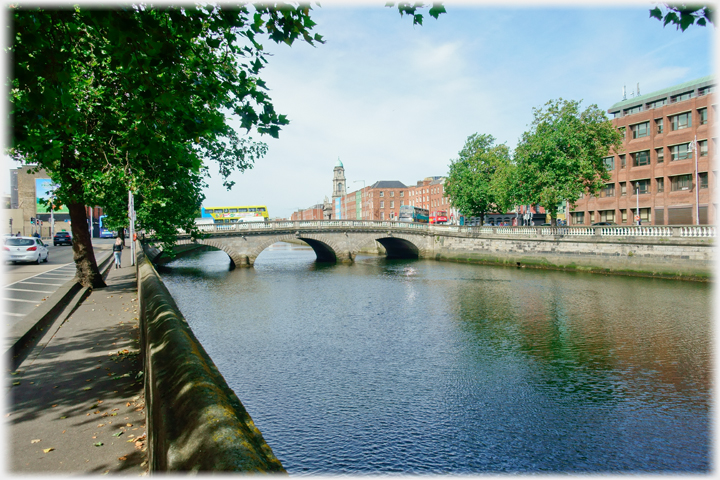 The Father Mathew Bridge was so named in 1938 after Father Theobald Mathew "the Apostle of Temperance" for his work as a teetotaller. Irish wit has managed to place it just downstream of Usher's Quay that links to the Guinness Brewery - at least he may know he is not without work
The Father Mathew Bridge was so named in 1938 after Father Theobald Mathew "the Apostle of Temperance" for his work as a teetotaller. Irish wit has managed to place it just downstream of Usher's Quay that links to the Guinness Brewery - at least he may know he is not without work
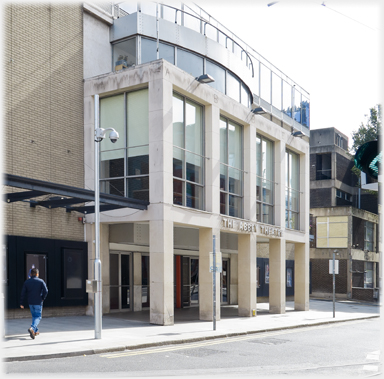 The Abbey Theatre has been here since 1966 and as befits its origins, fostering such luminaries as Yates, O'Casey, Gregory and Synge, was the first state subsidised theatre in the English speaking world
The Abbey Theatre has been here since 1966 and as befits its origins, fostering such luminaries as Yates, O'Casey, Gregory and Synge, was the first state subsidised theatre in the English speaking world
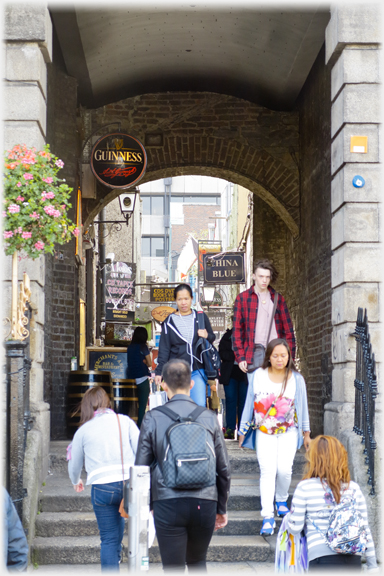 The Merchant's Arch building, by Ha'penny Bridge was (until 1841) the Guildhall. Since the decline of guild influence it has had many uses and is now a restaurant
The Merchant's Arch building, by Ha'penny Bridge was (until 1841) the Guildhall. Since the decline of guild influence it has had many uses and is now a restaurant
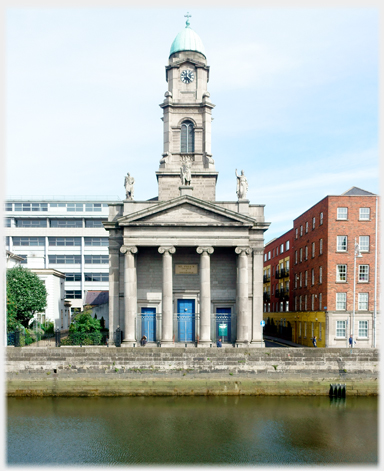 The first of Patrick Byrne's many churches in Dublin,
St Paul's,
The first of Patrick Byrne's many churches in Dublin,
St Paul's,
 was commissioned in 1835
was commissioned in 1835
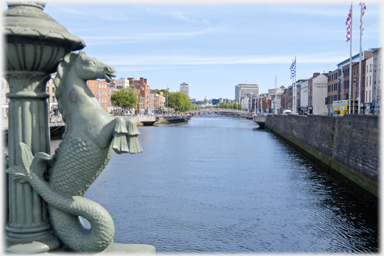 The sea horses on the Grattan Bridge lamps were cast in 1872, and may have looked back to the loss of the stone bridge together with two horses on that site in 1687
The sea horses on the Grattan Bridge lamps were cast in 1872, and may have looked back to the loss of the stone bridge together with two horses on that site in 1687
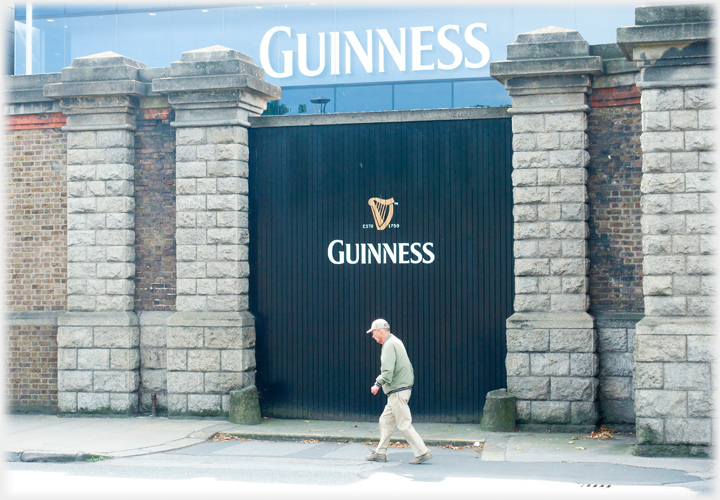 How can Guinness not have the last word?
The next page takes a jump.
It concentrates on a particular time and place: the equinox and Carrick shore. The photographs were all taken in one place on 21st September across a number of years.
How can Guinness not have the last word?
The next page takes a jump.
It concentrates on a particular time and place: the equinox and Carrick shore. The photographs were all taken in one place on 21st September across a number of years.
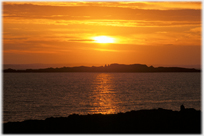

Saturday 30th September 2017
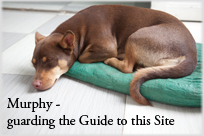
Go to the Picture Posting contents page
Return to the top
|
|
 Jim Larkin and 'The Spire' on O'Connell Street
[The Spire was completed in 2003 and is 120 metres high, Jim Larkin (1876-1947) brought trade unionism and nationalism to many workers in Ireland, to the left is the Post Office.]
This page has pictures taken between the two main Dublin stations (Connolly and Heuston) which are a couple of miles apart; between them flows the
River Liffey,
Jim Larkin and 'The Spire' on O'Connell Street
[The Spire was completed in 2003 and is 120 metres high, Jim Larkin (1876-1947) brought trade unionism and nationalism to many workers in Ireland, to the left is the Post Office.]
This page has pictures taken between the two main Dublin stations (Connolly and Heuston) which are a couple of miles apart; between them flows the
River Liffey,
 the banks of which offer a pleasant walk. There is a new tram system providing passengers with a smooth ride between stations, but the allure of the walk,
if the weather and time permit, easily wins out and allows the visitor to see many of the city's 'visitor attractions' which lie near the 'Quays' of the Liffey. Although these photographs were taken on the walk, they are not in that order, for one thing is as near certain as anything in Ireland:
history starts with the 'Post Office'...
the banks of which offer a pleasant walk. There is a new tram system providing passengers with a smooth ride between stations, but the allure of the walk,
if the weather and time permit, easily wins out and allows the visitor to see many of the city's 'visitor attractions' which lie near the 'Quays' of the Liffey. Although these photographs were taken on the walk, they are not in that order, for one thing is as near certain as anything in Ireland:
history starts with the 'Post Office'...

 ...and this is its facade, where the tricolour was raised on 24th April 1916 - Easter Monday - setting Ireland on the way to freedom from British occupation
...and this is its facade, where the tricolour was raised on 24th April 1916 - Easter Monday - setting Ireland on the way to freedom from British occupation
 A little nearer the river is the monument to Daniel O'Connell, often seen as the father of Irish independence, which was unveiled in 1882, the street was renamed after him in 1924
A little nearer the river is the monument to Daniel O'Connell, often seen as the father of Irish independence, which was unveiled in 1882, the street was renamed after him in 1924
 The Custom House was completed in 1791. Now refurbished and
open to the public
The Custom House was completed in 1791. Now refurbished and
open to the public

 The view on the Grattan Bridge (looking downstream) which was built in 1873. It was named after the late 18th Century Irish parliamentarian who had sought continued independence for the Irish legislature. And in the next picture is the view...
The view on the Grattan Bridge (looking downstream) which was built in 1873. It was named after the late 18th Century Irish parliamentarian who had sought continued independence for the Irish legislature. And in the next picture is the view...
 ...upstream from the Grattan Bridge, with its seahorse lamp posts, towards the City Council offices. The walk along the Liffey in central Dublin is a walk punctuated by the
river's bridges - each with its story
...upstream from the Grattan Bridge, with its seahorse lamp posts, towards the City Council offices. The walk along the Liffey in central Dublin is a walk punctuated by the
river's bridges - each with its story

 The Millenium and Ha'penny bridges from Grattan Bridge
The Millenium and Ha'penny bridges from Grattan Bridge
 A lamp post on O'Connell Street, 'The Spire' is in the background
A lamp post on O'Connell Street, 'The Spire' is in the background
 The banks of the Liffey do have new buildings such as the City Council offices
The banks of the Liffey do have new buildings such as the City Council offices
 Looking downstream from the Talbot Memorial Bridge are: first the low supports of the Sean O'Casey Bridge, then rising behind it the white arm of the Samuel Becket Bridge, and beyond on the left the Dublin Convention Centre, beside which is a moored tall ship
Looking downstream from the Talbot Memorial Bridge are: first the low supports of the Sean O'Casey Bridge, then rising behind it the white arm of the Samuel Becket Bridge, and beyond on the left the Dublin Convention Centre, beside which is a moored tall ship
 The Sunlight building of 1902 on Essex Quay with its
terracotta tile friezes
The Sunlight building of 1902 on Essex Quay with its
terracotta tile friezes


 The cars are halted by the lights, and a juggler moves out in front of them, hopefully you can see his three clubs and a ball in the air in the enlarged image on the left
The cars are halted by the lights, and a juggler moves out in front of them, hopefully you can see his three clubs and a ball in the air in the enlarged image on the left
 The Gate Lodge
The Gate Lodge
 that fronts the home of 'Liffey Water' near Heuston Station
that fronts the home of 'Liffey Water' near Heuston Station
 The Spanish designed James Joyce Bridge was opened in 2003 and hangs in very modern form on two steel arches, it sits next to...
The Spanish designed James Joyce Bridge was opened in 2003 and hangs in very modern form on two steel arches, it sits next to...
 ...the Rory O'More Bridge which was named after a key figure in the Irish rebellion of 1641, the present cast iron structure dates from 1861
...the Rory O'More Bridge which was named after a key figure in the Irish rebellion of 1641, the present cast iron structure dates from 1861
 The Father Mathew Bridge was so named in 1938 after Father Theobald Mathew "the Apostle of Temperance" for his work as a teetotaller. Irish wit has managed to place it just downstream of Usher's Quay that links to the Guinness Brewery - at least he may know he is not without work
The Father Mathew Bridge was so named in 1938 after Father Theobald Mathew "the Apostle of Temperance" for his work as a teetotaller. Irish wit has managed to place it just downstream of Usher's Quay that links to the Guinness Brewery - at least he may know he is not without work
 The Abbey Theatre has been here since 1966 and as befits its origins, fostering such luminaries as Yates, O'Casey, Gregory and Synge, was the first state subsidised theatre in the English speaking world
The Abbey Theatre has been here since 1966 and as befits its origins, fostering such luminaries as Yates, O'Casey, Gregory and Synge, was the first state subsidised theatre in the English speaking world
 The Merchant's Arch building, by Ha'penny Bridge was (until 1841) the Guildhall. Since the decline of guild influence it has had many uses and is now a restaurant
The Merchant's Arch building, by Ha'penny Bridge was (until 1841) the Guildhall. Since the decline of guild influence it has had many uses and is now a restaurant
 The first of Patrick Byrne's many churches in Dublin,
St Paul's,
The first of Patrick Byrne's many churches in Dublin,
St Paul's,
 was commissioned in 1835
was commissioned in 1835
 The sea horses on the Grattan Bridge lamps were cast in 1872, and may have looked back to the loss of the stone bridge together with two horses on that site in 1687
The sea horses on the Grattan Bridge lamps were cast in 1872, and may have looked back to the loss of the stone bridge together with two horses on that site in 1687
 How can Guinness not have the last word?
The next page takes a jump.
It concentrates on a particular time and place: the equinox and Carrick shore. The photographs were all taken in one place on 21st September across a number of years.
How can Guinness not have the last word?
The next page takes a jump.
It concentrates on a particular time and place: the equinox and Carrick shore. The photographs were all taken in one place on 21st September across a number of years.


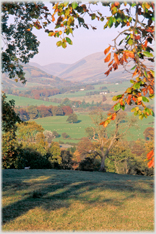
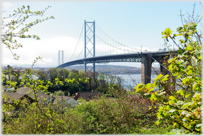 A page about one of Scotland's famous bridges
A page about one of Scotland's famous bridges
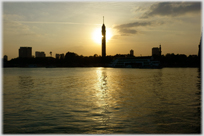 A page from beside Cairo's River Nile
A page from beside Cairo's River Nile
